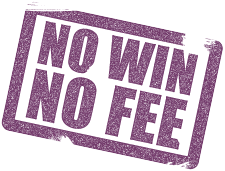This website uses cookies so that we can provide you with the best user experience possible. Cookie information is stored in your browser and performs functions such as recognising you when you return to our website and helping our team to understand which sections of the website you find most interesting and useful.
Workplace Hearing Health
Last Updated on February 10, 2025 by tanya
Workplace Hearing Health
How to Protect, Manage, and Monitor Noise Risks
Introduction
Hearing loss is a significant occupational hazard, with noise exposure in the workplace posing long-term health risks. This guide explores practical steps to protect your hearing in noisy environments, examines the lasting impact of hearing damage on mental and physical health, and highlights the latest innovations in noise monitoring technologies. By understanding these key areas, employees and employers can foster safer workplaces and prioritise hearing health, ensuring compliance with regulations and enhancing overall well-being. Let’s delve into strategies for prevention, coping, and modern solutions.
How to Protect Your Hearing in High-Noise Environments
Noise-induced hearing loss is preventable, yet millions are exposed to harmful noise levels daily. Here’s a guide to safeguarding your workplace hearing health in noisy workplaces or environments.
The Basics of Noise Protection
- Understand Noise Levels: Prolonged exposure to noise above 85 decibels (dB) can cause hearing damage. Use smartphone apps or professional tools to measure noise levels.
- Know Your Rights: Employers in the UK must comply with the Control of Noise at Work Regulations, ensuring safe noise levels and providing protection like earplugs.
Best Practices for Hearing Protection
Wear Hearing Protection:
-
- Earplugs: Comfortable for long periods and affordable.
- Earmuffs: Provide robust protection, especially in industrial settings.
Limit Exposure Time:
-
- Take regular breaks from loud environments.
- Rotate tasks to minimise prolonged noise exposure.
Maintain Equipment:
-
- Regular maintenance can reduce machinery noise.
- Opt for quieter equipment models.
Modern Innovations in Hearing Protection
- Noise-Cancelling Earbuds: Ideal for less industrial settings.
- Custom-Fit Earplugs: Offer personalised comfort and effectiveness.
By prioritising your hearing health and adopting these strategies, you can prevent long-term damage and enjoy better overall well-being.
Understanding the Long-Term Impact of Hearing Loss
Hearing loss affects more than just your hearing ability—it can influence your mental, social, and physical health. Here’s how it impacts daily life and how to cope.
The Emotional Toll
- Social Isolation: Struggling to hear can lead to withdrawal from conversations and events.
- Mental Health Effects: Studies link hearing loss to increased risks of depression and anxiety.
Cognitive and Physical Health Impacts
- Cognitive Decline: Untreated hearing loss is associated with an increased risk of dementia.
- Balance Issues: The inner ear plays a role in balance, and hearing damage can affect it.
Coping and Adapting
Seek Professional Help:
-
- Get regular hearing checks.
- Use hearing aids or assistive devices as recommended.
Improve Communication:
-
- Ask friends and family to speak clearly and face you.
- Use visual cues and technology to enhance conversations.
Inspiration from Real Life
Many individuals lead fulfilling lives despite hearing loss by embracing tools, therapy, and support networks.
Protect your hearing now to safeguard your future health and well-being.
Advancements in Workplace Noise Monitoring
Monitoring noise in the workplace is key to preventing hearing loss. Discover the latest innovations that make workplaces safer and quieter.
Why Noise Monitoring Matters
The Control of Noise at Work Regulations requires accurate noise assessments to ensure safety. Effective monitoring helps:
- Identify high-risk areas.
- Implement targeted noise reduction measures.
Modern Noise Monitoring Tools
- Digital Sound Meters: Handheld devices offering precise noise readings.
- Wearable Noise Monitors:
- Track individual exposure throughout the day.
- Alert wearers when thresholds are exceeded.
- Smart Sensors:
- Installed across worksites to monitor noise levels continuously.
- Integrated with apps for real-time data analysis.
Practical Noise Reduction Solutions
- Acoustic Barriers: Reduce sound reflection in open spaces.
- Equipment Modifications: Replace or repair noisy machinery.
- Quiet Work Zones: Designate areas with minimal noise for breaks.
By embracing these innovations, employers can create safer workplaces while adhering to legal standards, ensuring better hearing health for all employees.
Important Information About Personal Injury Claims
- Time Limits: You have three years from the date of the accident to file a claim. Exceptions may apply for individuals under 18 or those unable to claim due to incapacitation.
- Our Commitment: We help injured individuals and their families access expert care and rehabilitation. Working with experienced solicitors, we are dedicated to securing the compensation you deserve.
- No Win No Fee: Our partners offer “No Win No Fee” arrangements, giving you peace of mind.
If you’ve suffered hearing damage while at work that could be an occupational hazard, contact First Personal Injury today. Our experienced team is ready to help you navigate the claims process and connect you with the right solicitor to support you on your claim. Call us at 0333 358 2345 or visit our website to start your claim.
For more information, visit First Personal Injury.
